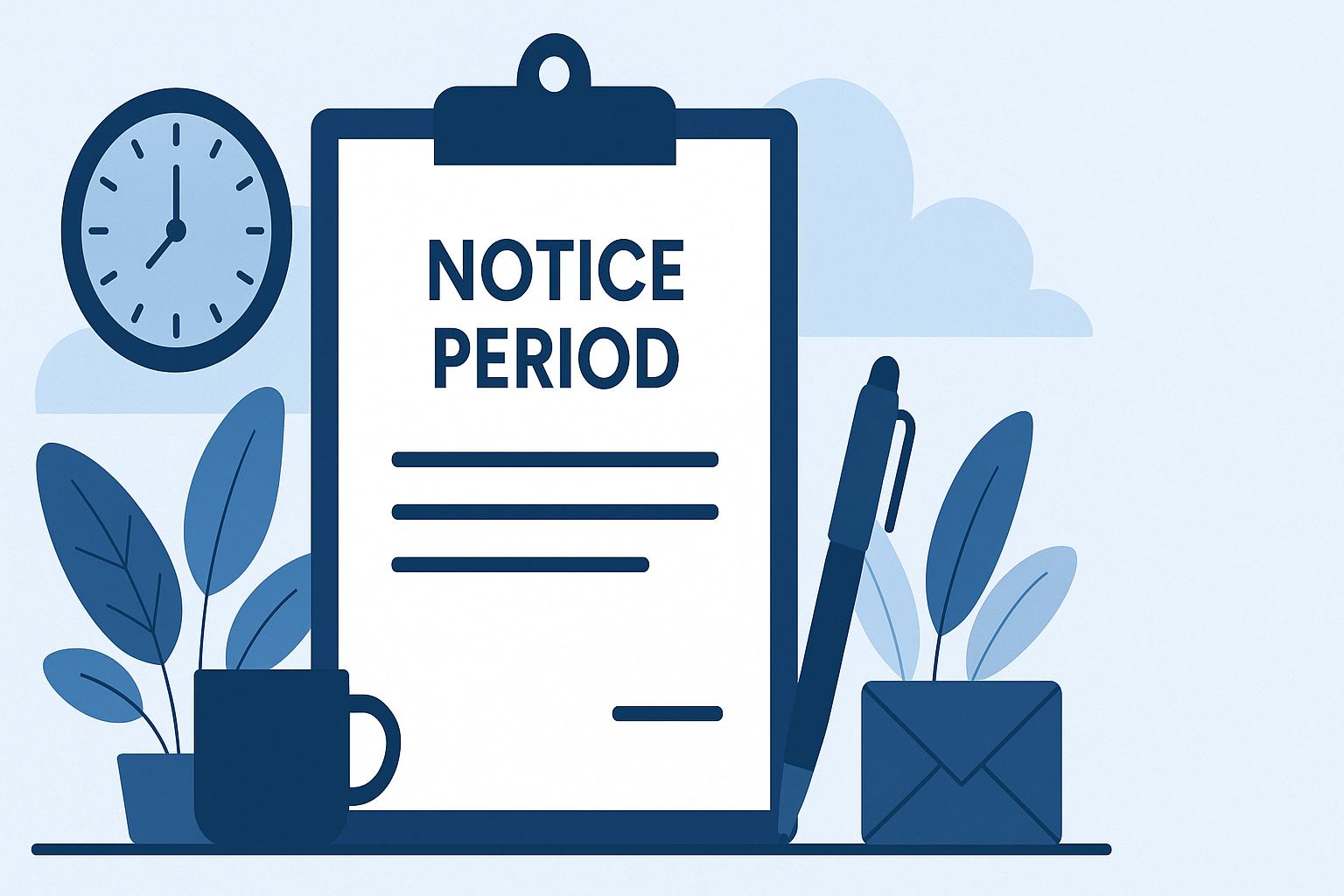Every Australian employee deserves time to rest, recharge, and spend quality time with family and friends. Holiday leave—officially known as annual leave under Australian employment law—is one of your fundamental workplace rights, ensuring you receive paid time off while maintaining job security and financial stability.
Whether you’re a new employee trying to understand when your annual leave kicks in, an HR manager ensuring compliance, or a business owner navigating shutdown periods, this comprehensive guide covers everything you need to know about holiday leave australia entitlements, accrual rates, and your rights under the national employment standards.
From understanding how much annual leave you’re entitled to, to knowing when employers can direct employees to take time off, we’ll break down the complexities of Australian annual leave laws into practical, actionable information you can use immediately.
What is Holiday Leave in Australia?
Holiday leave, officially referred to as annual leave under Australian employment law, is a form of paid time off provided to full time employees and part time employees as a core workplace right. The legislative foundation for this entitlement comes from the national employment standards (NES), primarily set out in the Fair Work Act 2009.
All full time employee and part time employee workers accumulate paid annual leave, which serves the dual function of supporting employee health and morale while ensuring adequate rest to maintain productivity and safety in the workplace.
Basic Entitlements Under the National Employment Standards
The NES mandates a minimum of at least four weeks (152 hours) of annual leave per year for a full-time employee, with leave accruing continuously from the very first day of employment—including during any probation period. This means your annual leave accumulates from day one, not after completing a probationary period as many people mistakenly believe.
Part time employees earn a pro-rata amount based on their ordinary hours of work. For example, if you work 20 hours per week instead of the standard 38 hours, you’ll accrue approximately half the annual leave of a full-time worker.
Who Gets Holiday Leave and Who Doesn’t
While most permanent employees are entitled to paid annual leave, casual employees operate under a different system. Casual employees don’t accrue annual leave and are instead compensated through a higher pay rate known as “casual loading”—typically set at 25% above the equivalent permanent rate.
Certain shift workers are entitled to an additional week, receiving up to five weeks total of annual leave annually if they’re regularly rostered on Sundays and public holidays in industries that define “shiftwork” under their modern award or enterprise agreement. This extended entitlement is especially common in healthcare, manufacturing, emergency services, and security roles.
Holiday Leave Entitlements and Accrual
Understanding exactly how your annual leave accumulates is crucial for planning time off and ensuring you’re receiving your full entitlements. The accrual system operates on precise calculations that continue building your leave balance week by week.
How Annual Leave Accrues
For full time employees, annual leave accrues at the rate of 2.923 hours per week, calculated as 38 standard ordinary hours × 4 weeks ÷ 52 weeks. This means that after working a completed week, you’ve earned just under three hours of paid time off.
Part time employees accrue leave proportionally based on their regular weekly hours. A part time employee working 20 hours per week will accrue approximately 1.46 hours of annual leave each week, totaling around 76 hours annually.
When Annual Leave Accumulates
Your employee’s annual leave balance grows during several circumstances:
- All ordinary hours worked: Every hour you work contributes to your accrual
- Paid leave periods: Annual leave accumulate while you’re taking other paid annual leave, paid sick leave entitlement, or long service leave
- Community service leave: Certain types of community service, including jury duty, count toward your service
- Specific unpaid leave: Some types of unpaid leave may count toward service, depending on your modern award or enterprise agreement
However, annual leave does not accrue during most unpaid leave periods, including unpaid parental leave, except where specifically outlined in your employment contract or modern awards.
Carry Over and Accumulation Rules
One of the most important aspects of Australian annual leave law is that unused annual leave automatically carries over year to year. There’s no “use it or lose it” policy under the national employment standards—your accrued annual leave continues building indefinitely until you take it or your employment ends.
When your employment ends, all untaken annual leave must be paid out in your final pay at the full rate, including any applicable annual leave loading.
Taking Holiday Leave
Once you’ve accrued annual leave, you’re generally free to take annual leave as soon as it’s available. Understanding your rights around leave requests and your employer’s obligations helps ensure you can access your earned time off when you need it.
Your Right to Take Annual Leave
Employees can take annual leave as soon as it’s accrued—there’s no minimum waiting period unless specifically restricted by your modern award or company policy, though such restrictions are rare. The key principle is that employers must not unreasonably refuse an employee’s request for annual leave.
Courts and the Fair Work Commission interpret “unreasonable” refusal in light of operational needs, peak business periods, and other valid business grounds. However, employers must provide genuine justification for any refusal and cannot simply deny requests arbitrarily.
Notice Requirements and Planning
While modern awards and enterprise agreements often require “reasonable notice” for annual leave request submissions, “reasonable” isn’t numerically defined at the national level. In practice, workplaces typically set their own expectations for advance notice, but employees shouldn’t face unreasonable barriers to accessing their entitlements.
Most employers appreciate advance notice period planning, especially for extended periods or during busy times. However, urgent situations—such as family emergencies or domestic violence circumstances—may require more flexible approaches to leave approval.
Public Holidays During Annual Leave
A critical protection for employees is that if a public holiday falls during your period of annual leave, it doesn’t deduct from your accrued annual leave balance. The public holiday is treated as a separate entitlement, meaning you effectively get an extra day off without using your accumulated leave.
This principle ensures that employees aren’t penalized for taking leave during periods when public holidays occur, such as the Christmas and New Year period when many Australians prefer to take extended breaks.
Sick Leave During Holiday Leave
If you fall ill or need to care for a family member while on annual leave—and can provide appropriate medical documentation—those days can be reclassified as personal leave or sick and carer’s leave. This preserves your employee’s annual leave balance for future use and ensures you’re not losing paid time off due to circumstances beyond your control.
When Employers Can Direct Holiday Leave
While employees generally control when they take their accrued leave, there are specific circumstances where employers can direct employees to use their annual leave. Understanding these situations helps both employers and employees navigate potentially complex workplace scenarios.
Business Shutdowns and Seasonal Closures
Many Australian businesses close for several days or weeks, particularly during the Christmas and New Year period, often requiring employees to use their accrued annual leave. This practice is legal but must comply with relevant modern award or enterprise agreement rules.
Employers must provide reasonable notice before directing leave during shutdowns—often four weeks or more, though specific requirements vary by award. The notice period allows employees to plan their finances and personal commitments around the mandatory time off.
Managing Excessive Annual Leave
When an employee has accrued excessive annual leave—commonly defined as over 8 weeks for regular workers or 10 weeks for shift workers—employers may direct employees to take some leave. This provision prevents situations where employees accumulate enormous leave balances that could create financial liability for businesses.
Modern awards and enterprise agreements typically set procedural requirements, including consultation processes and reasonable notice periods, before employers can compel leave. The direction must be reasonable, considering both the employee’s circumstances and legitimate operational needs.
Compliance and Consultation Requirements
Any direction to take leave must follow proper procedures outlined in the relevant modern award or enterprise agreement. Employers can’t simply force employees to take leave without following established consultation processes and providing adequate notice.
The “reasonableness” test applies to both the direction itself and the circumstances surrounding it. Factors include the employee’s personal situation, workplace operational requirements, and whether proper procedures have been followed.
Holiday Leave Pay and Loading
Understanding how much you’ll be paid during annual leave involves several components beyond your basic wage rate. Many employees are entitled to additional payments that recognize the extra costs and lost opportunities associated with taking time off work.
Base Pay Rate and Standard Payments
Annual leave is generally paid at your employee’s base pay rate for ordinary hours of work, up to 38 hours per week for full time employees. This means you receive your regular wage for the time you’re on leave, maintaining financial consistency during your time off.
Part time employees receive payment based on their regular ordinary hours, ensuring proportional compensation that reflects their normal working arrangements.
Annual Leave Loading Explained
Many modern awards and some enterprise agreements entitle employees to 17.5% annual leave loading—an additional amount paid on top of your base rate during annual leave periods. This loading compensates for the loss of overtime opportunities, penalty rates, and additional costs often associated with taking holidays.
For example, if your base weekly rate is $1,000, the 17.5% loading would add $175 to your holiday pay, bringing your total weekly payment to $1,175 while on annual leave. Not all employees receive loading—it depends on your specific modern award or enterprise agreement.
Superannuation and Other Benefits
Superannuation contributions continue during paid annual leave periods, with employers required to contribute to your fund as if you were working normally. This ensures your retirement savings aren’t interrupted during time off work.
Other employment benefits, such as accrual of other leave types, generally continue during annual leave periods, maintaining the continuity of your employment relationship.
Payment Upon Termination
When employment ends, all untaken annual leave must be paid out in your final pay at the full rate, including any annual leave loading that would have applied. This ensures employees don’t lose their accumulated entitlements when changing jobs or retiring.
The calculation includes all accrued but untaken leave, regardless of how long it has been accumulating, providing financial recognition for years of service.
Shift Workers and Extended Holiday Leave
Shift workers in certain industries receive enhanced annual leave entitlements, recognizing the additional demands and disruptions associated with non-standard working hours and continuous operations.
Five Week Entitlement Criteria
Continuous shift workers often receive up to five weeks of annual leave rather than the standard four weeks. To qualify, employees must work in enterprises with continuous operations and be regularly rostered across all days of the week, including Sundays and public holidays.
The definition of “shift worker” varies between industries and should be confirmed in your applicable modern award or enterprise agreement. Industries such as manufacturing, healthcare, emergency services, and security commonly operate continuous shifts that qualify for extended leave entitlements.
Industries and Roles That Qualify
Healthcare workers, including nurses and hospital staff working rotating shifts, frequently qualify for the additional week of leave. Manufacturing operations that run 24/7, emergency services personnel, and security staff working continuous operations often fall under these extended entitlements.
The key factors are regular rostering on weekends and public holidays as part of maintaining continuous business operations, not simply working occasional weekends or overtime.
Managing Extended Leave Balances
For shift workers, the threshold for excessive annual leave is typically set higher—usually 10 weeks instead of 8 weeks for regular employees. This recognizes that shift workers receive more annual leave and may need longer periods to fully disconnect from demanding work schedules.
Employers must still follow proper consultation and notice procedures when directing shift workers to take leave, but the higher thresholds provide more flexibility in managing accumulated balances.
Cashing Out Holiday Leave
While annual leave is designed to provide actual time off work, Australian law permits limited cashing out of leave under strict conditions that protect employee welfare and prevent exploitation.
Legal Requirements for Cashing Out
Annual leave can only be cashed out with a written agreement between the employer and employee. This agreement must be genuinely voluntary—employers cannot force or pressure employees to cash out their leave entitlements.
The maximum amount that can be cashed out is 2 weeks within any 12-month period, and employees must retain at least 4 weeks of accrued annual leave after any cash-out arrangement. These limitations ensure employees maintain access to meaningful time off work.
Payment Calculations and Protections
When cashing out annual leave, the payment must equal what the employee would have received if they had taken the leave, including any applicable annual leave loading. This prevents employers from offering reduced rates for cashed-out leave.
The written agreement must specify the amount being cashed out, the payment calculation method, and confirm that the arrangement is voluntary. Employees should carefully consider whether cashing out leave serves their best interests, as paid time off provides important health and wellbeing benefits that money alone cannot replace.
When Cashing Out Makes Sense
Cashing out might be appropriate for employees facing financial pressures or those who have accumulated substantial leave balances and prefer additional income over time off. However, the restrictions ensure that cashing out doesn’t become a substitute for actually taking restorative time away from work.
Employees should consider their long-term wellbeing, potential future need for leave, and whether the immediate financial benefit outweighs the value of having paid time off available.
Holiday Leave Myths and Common Misconceptions
Misunderstandings about annual leave entitlements can lead to employees missing out on their rights or employers inadvertently breaching their obligations. Let’s address the most common myths that circulate in Australian workplaces.
Myth: Leave Only Starts After Probation
One of the most persistent misconceptions is that annual leave only begins accruing after completing a probation period. In reality, annual leave accrues from your very first day of employment, including during any probationary period.
This means even if you’re terminated during probation, you’re entitled to payment for any annual leave that has accrued during your employment period. The probation period doesn’t affect your fundamental entitlements under the national employment standards.
Myth: Casual Employees Get Some Annual Leave
Casual employees don’t receive any paid annual leave—instead, they’re compensated through casual loading, typically 25% above the equivalent permanent rate. This higher pay rate is intended to compensate for the lack of leave entitlements and job security.
Some casual employees mistakenly believe they should receive both casual loading and annual leave, but the loading specifically replaces leave entitlements. However, casual employees may have other rights, such as domestic violence leave or community service leave in certain circumstances.
Myth: Employers Can Refuse Any Leave Request
While employers can refuse annual leave requests, the refusal must be reasonable and based on legitimate business needs. Employers can’t arbitrarily deny leave or consistently refuse requests without proper justification.
The “reasonableness” test considers factors like operational requirements, staffing levels, peak business periods, and the amount of notice provided. Systematic refusal of leave requests could constitute a breach of employment law.
Myth: Public Holidays Count as Annual Leave
When a public holiday occurs during your annual leave period, it doesn’t reduce your leave balance. Public holidays are separate entitlements that don’t consume your accrued annual leave.
This protection ensures employees aren’t disadvantaged for taking leave during periods when public holidays occur, such as the popular Christmas and New Year period.
Myth: You Lose Unused Leave Each Year
Australian annual leave doesn’t operate on a “use it or lose it” basis. Unused annual leave automatically carries over to the following year and continues accumulating until you take it or your employment ends.
When your employment ends for any reason, all untaken annual leave must be paid out in your final pay, ensuring you never lose these earned entitlements.
Getting Help with Holiday Leave Issues
When questions or disputes arise about annual leave entitlements, several resources and support systems are available to help both employees and employers understand their rights and obligations.
Fair Work Ombudsman Services
The Fair Work Ombudsman provides free advice and assistance through their national helpline (13 13 94) and comprehensive online resources. They can help clarify your specific entitlements based on your industry, employment type, and applicable modern award or enterprise agreement.
The Fair Work Ombudsman also offers dispute resolution services and can investigate complaints about annual leave entitlements, unpaid leave, or other workplace issues. Their website includes tools to check your award conditions and calculate leave entitlements.
Union Support and Advocacy
Joining your relevant union provides access to workplace advocates who specialize in protecting employee rights, including annual leave entitlements. Unions can provide advice, represent members in disputes, and negotiate better conditions through enterprise agreements.
Union representatives understand the complexities of different modern awards and can help ensure you’re receiving all entitlements, including proper annual leave loading, superannuation during leave, and protection from unreasonable refusals.
Documentation and Record Keeping
Maintaining accurate records of your leave accrual, usage, and payments is crucial for resolving any disputes efficiently. Keep copies of:
- Pay slips showing leave accrual and deductions
- Leave applications and approval communications
- Employment contracts and workplace policies
- Modern award or enterprise agreement documents
Good record keeping helps identify discrepancies early and provides evidence if formal disputes arise.
Legal Advice for Complex Issues
For complex disputes involving substantial amounts of money, systematic underpayment, or retaliation for asserting leave rights, consider seeking legal advice from employment lawyers who specialize in workplace law.
Legal professionals can assess whether you have grounds for compensation claims, help navigate formal complaint processes, and represent your interests in more serious disputes.
|
Support Service |
Contact Method |
Best For |
|---|---|---|
|
Fair Work Ombudsman |
13 13 94 or online |
General questions, calculations, basic disputes |
|
National Relay Service |
133 677 |
Hearing/speech impaired callers |
|
Union Representatives |
Through your union |
Ongoing advocacy, enterprise agreement issues |
|
Employment Lawyers |
Legal directories |
Complex disputes, substantial claims |
Key Takeaways for Holiday Leave Australia
Understanding your holiday leave entitlements empowers you to make informed decisions about your work-life balance while ensuring you receive all the benefits you’ve earned through your employment. The Australian system provides strong protections for workers while allowing reasonable flexibility for business operations.
Whether you’re entitled to the standard four weeks of annual leave or qualify for up to five weeks as a shift worker, your rights begin from day one of employment and continue building throughout your career. Remember that employers must not unreasonably refuse your leave requests, and you’re protected from losing entitlements through carry-over provisions and termination payouts.
If you’re unsure about any aspect of your annual leave entitlements, don’t hesitate to contact the Fair Work Ombudsman for free, confidential advice tailored to your specific situation. Your right to paid time off is fundamental to maintaining your health, wellbeing, and productivity throughout your working life.
Take the time to understand your entitlements, keep good records, and advocate for your rights when necessary. Your future self will thank you for the rest, relaxation, and life experiences that proper use of annual leave provides.




